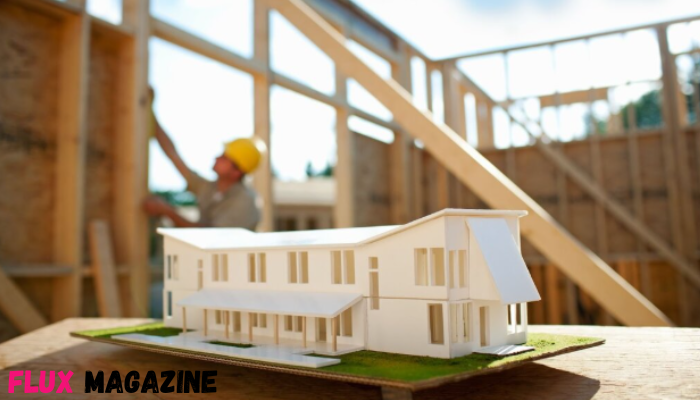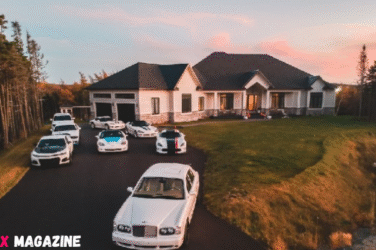You’ve locked in the design, paid your deposit, and finally secured the block you’ve been eyeing for months. It feels like everything’s ready to go, but then your builder sends over an updated estimate, and suddenly the numbers don’t look quite so friendly. The culprit? Site costs. This part of the process often blindsides first-time builders. Even before your construction certificate is approved, there are ground conditions, compliance requirements, and service connections that can drive up your out-of-pocket spend. The site might look straightforward, but what’s underground and around it can add thousands before a single wall is framed. Understanding where these costs come from early can save you from budget shocks and prevent delays once the build begins.
What are ‘site costs’ and why are they rarely fixed?
Site costs cover everything your builder has to do to prepare your block for construction. That includes clearing the land, leveling it, managing drainage, removing any trees, and ensuring the soil is stable enough to support the structure. What catches most people out is how variable these tasks can be, and how quickly they add up once testing begins.
Builders often provide a provisional allowance for site costs, especially in volume builds. But those allowances are just educated guesses until they receive the soil test and contour survey results. If your soil is reactive or if your block needs more excavation than expected, the real costs can be significantly higher than what was initially quoted.
This isn’t always about dodgy pricing, it’s often a matter of unknowns. Unlike a floor plan or façade, the ground beneath your site isn’t fully visible until detailed reports are done. Builders are cautious with fixed pricing because one unexpected challenge can wipe out their margin. For the owner, that means planning for a buffer and not treating provisional sums as final figures.
When the land looks fine but isn’t
At first glance, a flat and cleared block might seem like a dream start. But what’s under the surface tells the real story. Sydney has plenty of infill lots and estates built on former farmland, and while they look smooth, they often contain fill, debris, or unstable soil that requires extensive preparation.
The most common surprise is poor soil classification. If the soil is classed as highly reactive or contains clay, the slab design needs to be upgraded, sometimes requiring piers or edge beams to prevent movement. Similarly, sites with a high water table or underlying rock may need drainage systems or rock excavation, both of which come with a hefty price tag.
These aren’t things you can spot from a walk-through. It’s not uncommon for owners to assume the block will be a cheap prep job based on its appearance, only to be hit with a revised site cost once the engineering reports come back. Even seasoned investors can be caught off guard if they haven’t seen the data.
Council requirements and developer guidelines that inflate costs
Even before your plans make it to the construction stage, there are external requirements that can quietly swell your budget. Developers often have their own design guidelines, and councils apply overlays or site-specific controls that aren’t always obvious during initial planning.
Some estates mandate additional landscaping, façade treatments, or fencing that meets a particular aesthetic. While these may improve neighborhood consistency, they often come at the owner’s expense. Council overlays for things like bushfire zones, flood risks, or heritage controls can require detailed reports or design adjustments, all of which cost time and money.
A common frustration is that these requirements don’t always show up early in the sales process. You might only find out after your plans are submitted or when your builder reviews the 10.7 planning certificate. By then, redesigns and extra compliance items are harder to avoid. It’s one reason experienced builders suggest doing more due diligence upfront, even if your block is part of a new land release.
How the timeline of your build affects site prep expenses
Time plays a bigger role in cost blowouts than most people realise. Between land registration delays, loan approvals, and design finalisation, it’s not unusual for several months to pass before construction begins. During that time, your site conditions can shift, and so can the cost of prepping it.
Heavy rain, erosion, or shifting fill can alter the stability of the ground. If soil compaction changes or drainage is affected, the original engineering may need to be revised. Likewise, holding off on building for too long can trigger new compliance issues. A bushfire overlay might be updated, or the council may change its stormwater requirements. These adjustments can force a redraw or an engineering update, both of which extend the timeline and raise costs.
Builders have noted this pattern, especially in the early stages of building a house in Sydney, where what seemed like a simple site becomes more complex once the work is delayed. It’s not always due to neglect, even things like waiting on NBN or utility connections can stall the build and expose the project to new fees. Timing isn’t just about getting in early for prices; it’s also about reducing exposure to site changes you can’t control.
Avoiding the blowout: what you can do early
The earlier you dig into the details of your site, the more control you’ll have over costs. While builders typically arrange the standard soil and contour reports, you can get these done independently before committing to a build contract. This gives you leverage, not just in pricing, but in choosing a design that suits the block without over-engineering.
It’s also worth questioning anything that looks too optimistic in your tender or estimate. A suspiciously low provisional allowance might be a red flag. Ask your builder if they’ve built on similar land before, and whether they’ve included items like retaining, drainage, or rock excavation in their assumptions. If they haven’t, expect to pay extra once construction starts.
Another way to reduce exposure is to choose a builder who offers fixed site costs. While these tend to be higher up front, they can protect your budget from creeping expenses later. Just make sure you understand what’s included. Some fixed-site packages still carry exclusions for certain soil types or unexpected conditions, so read the fine print.
Lastly, don’t choose a block just because it’s slightly cheaper or looks easy to build on. Make sure someone qualified has actually assessed it. Many builders will walk away from blocks that look simple but come with hidden issues, you don’t want to be the one left to deal with those after your deposit is paid.
Also Read: Top Interior Design Ideas Using Beading for a Modern Finish
Why preparation pays off
What you can’t see on your block can cost you more than the house itself. Site costs are rarely advertised, often underestimated, and almost always more complex than buyers expect. But they’re not entirely out of your hands. A bit of research, a few upfront reports, and a cautious eye on the timeline can stop your budget from unraveling before the slab is even poured.


















Show Comments (0)